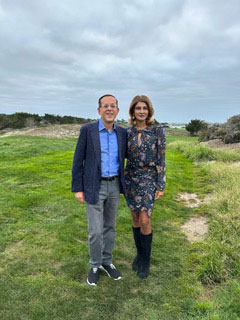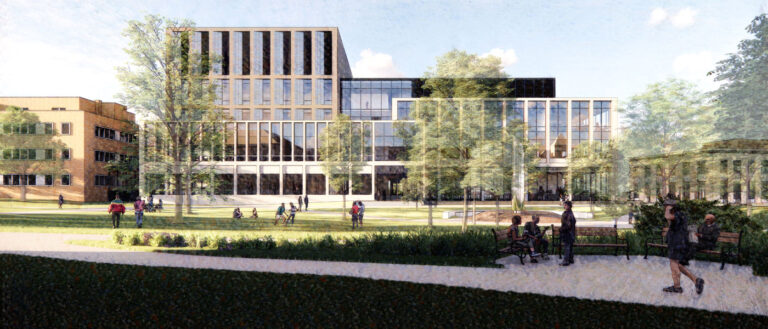Trustee Aarti Chandna and her husband, Asheem, also co-chair the project’s fundraising campaign
As a longtime social impact and angel investor, Aarti Chandna knows well what she needs to see before committing to support a project.
“The way I look at it—any successful company has to be a place where different disciplines can work together well,” said Chandna, a Case Western Reserve alumna and trustee. “No single discipline can exist on its own.”
So when she learned the university planned to build a state-of-the-art structure that supports the kinds of breakthroughs possible when researchers with different areas of expertise come together, Chandna didn’t hesitate. She and her husband, Asheem, also an alumnus, have committed $5 million to the project—and are co-chairing the project’s fundraising campaign cabinet.

“If this university wants to rise even higher,” Aarti Chandna said, “we need to provide our researchers not only with the funding and latest tools needed but also the space.”
After earning her master’s degree in computer science from CWRU, Chandna earned a series of advancing roles with leading technology companies, including Oracle, Hitachi, Autodesk and Nikon. At every stop, the office settings shared a common feature: wide-open workspaces for collaborative work and conference rooms available when individuals or teams needed quiet space.
These experiences reinforced a perspective she already had begun to form as a graduate student—namely, open spaces are critical to encouraging collaboration. After becoming a trustee in 2018 and engaging more often with campus community members, Chandna was deeply impressed.
In addition to their intellect and dedication, researchers enthusiastically embraced interdisciplinary efforts. Several such projects were showing promising results—despite constraints and modern facilities.
“They have so much potential,” Chandna said of the researchers. “Today, they lack modern collaborative spaces; giving the researchers the space they need would add highly to their productivity and success enabling them to not only stay competitive but give them the ability to lead.”
As crucial as additional space is for collaboration, Chandna also emphasized flexibility’s importance. As projects evolve, for example, faculty might need extra room to accommodate that work. But when a researcher shifts to a new study area, the space necessary for preliminary investigation will likely be less.
“You should be able to change space to fit your needs,” Chandna said.
Campus leaders involved in the initial planning for the new building shared similar sentiments—and conveyed them to the project’s architects at HGA.
“As the science changes, this building will be able to adapt as well,” said Peter Cook, a design principal at HGA and lead architect on the project. “We want to make sure this building is as timeless as it can be.”


